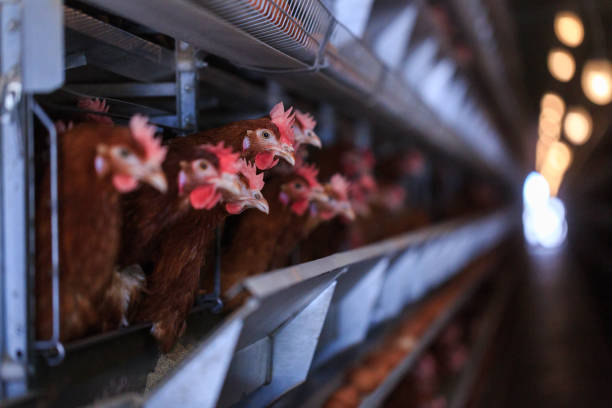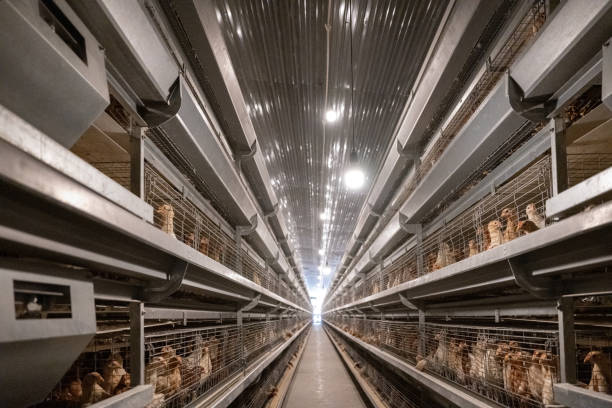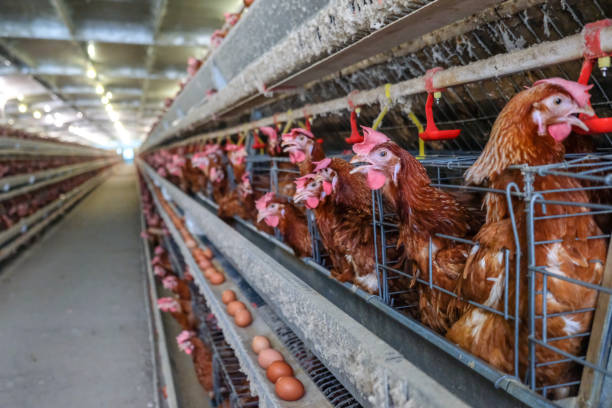
50,000 Bird Chicken Project in Indonesia: Cage Considerations
50,000 Bird Chicken Project in Indonesia: Cage Considerations
Indonesia, with its rapidly growing population and increasing demand for poultry products, presents a significant opportunity for poultry farmers. Embarking on a 50,000-bird chicken project is a substantial undertaking, and selecting the right housing system is paramount to the project’s success. For many, cages offer a compelling solution, providing numerous advantages in terms of space management, hygiene, and overall flock management. However, the decision of whether or not to utilize cages, and the specific type of cage system selected, necessitates careful consideration of several factors.
Why Cages? The Benefits of Choosing Cage Systems
Before delving into specific cage types and considerations, it’s crucial to understand the overarching benefits that cage systems offer, particularly for a large-scale operation like a 50,000-bird chicken project.
Increased Stocking Density: Cage systems allow for a much higher stocking density compared to floor systems. This is because birds are housed in separate compartments, minimizing wasted space. For a project of this scale, maximizing space utilization is essential to optimize profitability. The higher density translates directly into more eggs or meat produced per square meter of housing.

Improved Hygiene and Disease Control: One of the foremost advantages of cage systems is the enhanced hygiene control. Droppings fall through the wire mesh floors of the cages, preventing the birds from coming into direct contact with their waste. This reduces the risk of disease outbreaks and minimizes the spread of parasites. Cleaner environments mean healthier birds and lower mortality rates.
Easier Management and Monitoring: Cage systems simplify bird management and monitoring significantly. It becomes easier to individually inspect birds for signs of illness or injury. Vaccination and treatment processes also become more streamlined. The structured environment allows farmers to easily identify and address any issues quickly, ensuring the well-being of the flock.
Reduced Feed Wastage: Cage systems inherently minimize feed wastage. Feed troughs are designed to prevent spillage, and the controlled environment reduces the likelihood of birds scratching and scattering feed. Less feed wastage results in significant cost savings over the lifespan of the project.
Improved Egg Quality (for Layer Farms): For layer farms, cage systems contribute to improved egg quality. The eggs roll away from the hen immediately after laying, keeping them clean and reducing the risk of breakage. This translates into a higher percentage of marketable eggs and increased revenue.
Automation Potential: Cage systems are highly amenable to automation. Automated feeding, watering, egg collection (for layers), and manure removal systems can significantly reduce labor costs and improve efficiency. In a large-scale project, automation is key to optimizing operational efficiency and profitability.
Cage Type Selection: Tailoring the System to Your Needs
Once the decision to utilize cage systems has been made, the next step is to select the most appropriate cage type. There are several options available, each with its own set of advantages and disadvantages. For layer chickens, the typical choices are:
Layer Chicken Battery Cages: These are the traditional type of cage, typically housing multiple birds per cage. They are arranged in tiers, maximizing space utilization. While they are often the most economical option initially, they are facing increasing scrutiny due to animal welfare concerns and are being phased out in some regions. However, improved designs are available with more space per bird and designed for enriched environments.
A-Frame Layer Chicken Cages: This type of cage, named for its shape, allows greater ventilation and light exposure for each bird. A frame layer cage are often slightly more expensive than the traditional battery cages but offer an improvement in the living area for the flock.
H-Frame Layer Chicken Cages: H-frame cages are designed for excellent manure management, and the configuration allows for easy inspection and maintenance because you can walk between the tiers of cages.
Manure Removal Systems: There are multiple manure removal systems. The most common are manure belt, manure scraper, and deep pit. Manure belts are known as the most sanitary but also the more expensive of the three options. Manure Scrapers are generally used in A-Frame or H-Frame configurations. The deep pit system involves waste collected in a pit below the cages; deep pits are usually found on farms with slatted floors and require good ventilation to prevent an ammonia build-up.
For broiler chickens (meat chickens), the common choice includes:
Broiler Chicken Cages: These cages are specifically designed for the rapid growth and efficient meat production of broiler chickens. They are typically larger than layer cages, providing ample space for the birds to move around. Cage floor material is an important consideration to minimizing damage to the feet and carcass value.
Critical Considerations for Cage Implementation in Indonesia
While cage systems offer numerous advantages, successful implementation requires careful consideration of several critical factors specific to the Indonesian context.
Climate: Indonesia has a tropical climate with high temperatures and humidity. It’s essential to select cage systems and housing structures that provide adequate ventilation and cooling to prevent heat stress in the birds. Open-sided houses with natural ventilation can be effective, but in some regions, climate-controlled housing with forced ventilation or cooling systems may be necessary.
Local Regulations and Animal Welfare Standards: It is crucial to thoroughly understand and comply with all applicable local regulations and animal welfare standards. While cage systems are still widely used in Indonesia, there is growing pressure to improve animal welfare standards. Considering more enriched cage designs that provide the birds with more space and behavioral opportunities, like perches, scratch pads, and nesting areas , can mitigate potential future regulatory challenges.

Feed and Water Availability: Ensure access to a reliable supply of high-quality feed and water. The feed and water system should be properly designed to provide each bird with adequate nutrition and hydration. Automated feeding and watering systems can significantly improve efficiency and reduce labor costs.
Manure Management: Proper manure management is essential to prevent environmental pollution and maintain a clean and healthy environment within the poultry house. Consider installing a manure management system that effectively removes and processes manure. Manure can be dried and used as fertilizer, or it can be processed into biogas.
Labor Costs and Availability: Assess the availability and cost of labor in your area. While automated cage systems can reduce labor requirements, some manual labor will still be necessary. Factor labor costs into your financial projections.
Disease Prevention and Biosecurity: Implement strict biosecurity measures to prevent disease outbreaks. This includes controlling access to the poultry house, disinfecting equipment, and implementing a vaccination program. Cage systems facilitate biosecurity by reducing contact between birds and providing a more controlled environment. Foot baths entering the coop are a typical biosecurity measure.
Initial Investment and Operating Costs: Carefully evaluate the initial investment and ongoing operating costs of different cage systems. Consider the cost of the cages themselves, as well as the cost of installation, automation equipment, electricity, feed, water, and labor. Develop a detailed financial model to assess the profitability of the project.
Supplier Selection: Choosing a reputable and reliable cage supplier is paramount. Look for a supplier with extensive experience in the poultry industry and a proven track record of providing high-quality equipment and excellent customer service. Ensure that the supplier can provide installation, training, and maintenance support. Ask for customer references and visit existing farms that are using the supplier’s cage systems.
Egg Collection and Processing (for Layer Farms): Efficient egg collection and processing are essential for maximizing profitability in layer farms. Consider installing an automated egg collection system to reduce labor costs and minimize egg breakage. The egg processing facility should be located close to the poultry house to minimize transportation costs and maintain egg quality.
Beyond Cages: Addressing Potential Concerns
While cages offer several benefits, it’s important to acknowledge and address potential concerns associated with their use:
Animal Welfare: Animal welfare is a growing concern globally. Critics argue that traditional cage systems restrict natural bird behaviors and compromise their well-being. Choosing enriched cage designs that provide more space and behavioral opportunities can help mitigate these concerns. Educating yourself on evolving best practices and regulations regarding animal welfare is crucial.

Public Perception: Public perception of cage systems can impact consumer demand for poultry products. Be transparent about your farming practices and consider engaging with consumers to address their concerns and build trust.
Conclusion: Making an Informed Decision
Embarking on a 50,000-bird chicken project in Indonesia is a significant investment. The decision regarding whether or not to utilize cage systems should be based on a careful evaluation of the benefits, drawbacks, and critical considerations. By thoroughly understanding the local context, selecting the appropriate cage type, and implementing best management practices, poultry farmers in Indonesia can achieve success in this growing market.
Ultimately, the most successful projects will be those that prioritize both economic efficiency and animal welfare, ensuring a sustainable and ethical approach to poultry production. Choosing a supplier like Livi Machinery, with experience in Indonesian markets and commitment to providing a variety of cage solutions, can be a vital step towards achieving those goals.
